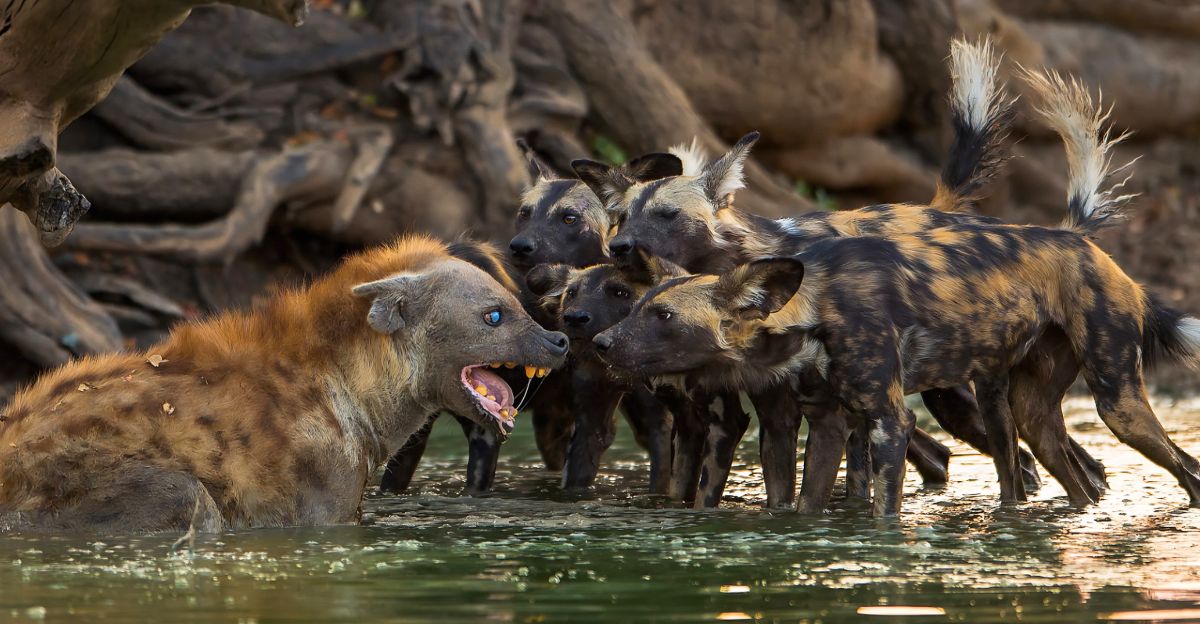
In most people’s minds, “dog” means a pet or pedigree, but real wild canines often defy our kennel registers. These wild dog populations – from Australian outbacks to African savannas – evolved through survival, not selective breeding. In other words, they tend to be lean, medium-sized canids with earthy coats and erect ears, honed by hunting and scavenging rather than living by humans’ rules. Each item below is a distinct wild-living canine group, famous (or obscure) examples of canids that don’t match any domestic breed standard.
Carolina Dog (American Dingo)
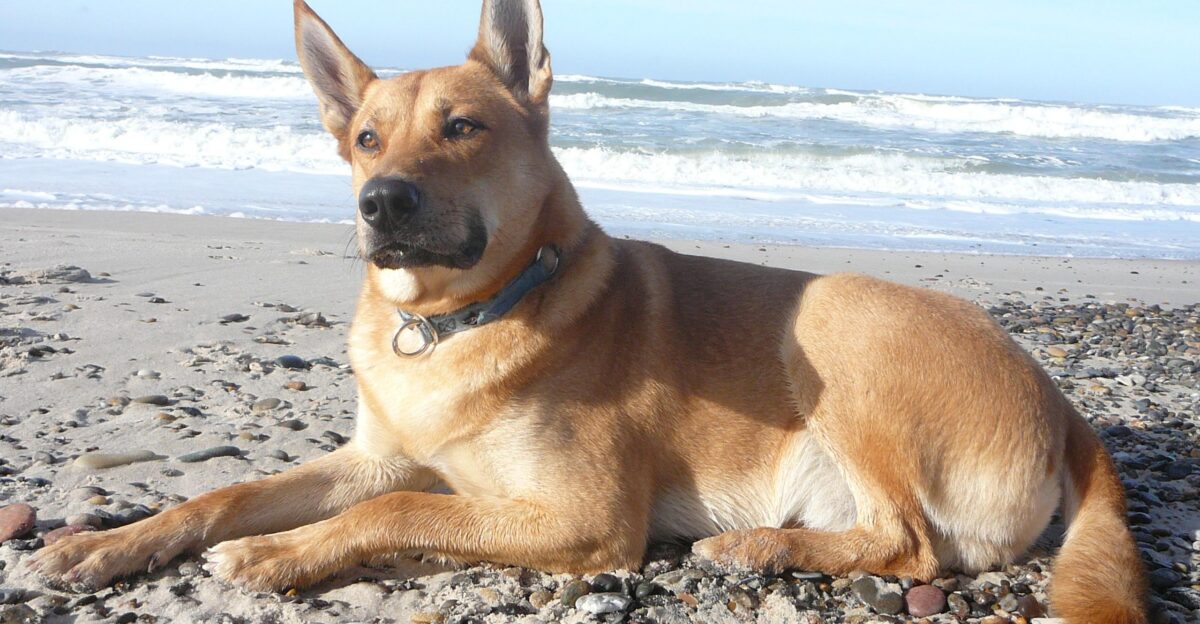
The “Carolina dog” was long a mystery. In the 1970s, biologists found medium-sized ginger-coated dogs roaming wild in remote Southeast U.S. swamps and pines. Originally mistaken for strays, they turned out to be a primitive landrace – a free-breeding population with roots in ancient Asian dogs, not recent imports. In other words, they were living wild for generations (“America’s dingo”), later gaining kennel-club recognition, but they started as a natural wild population.
Australian Dingo
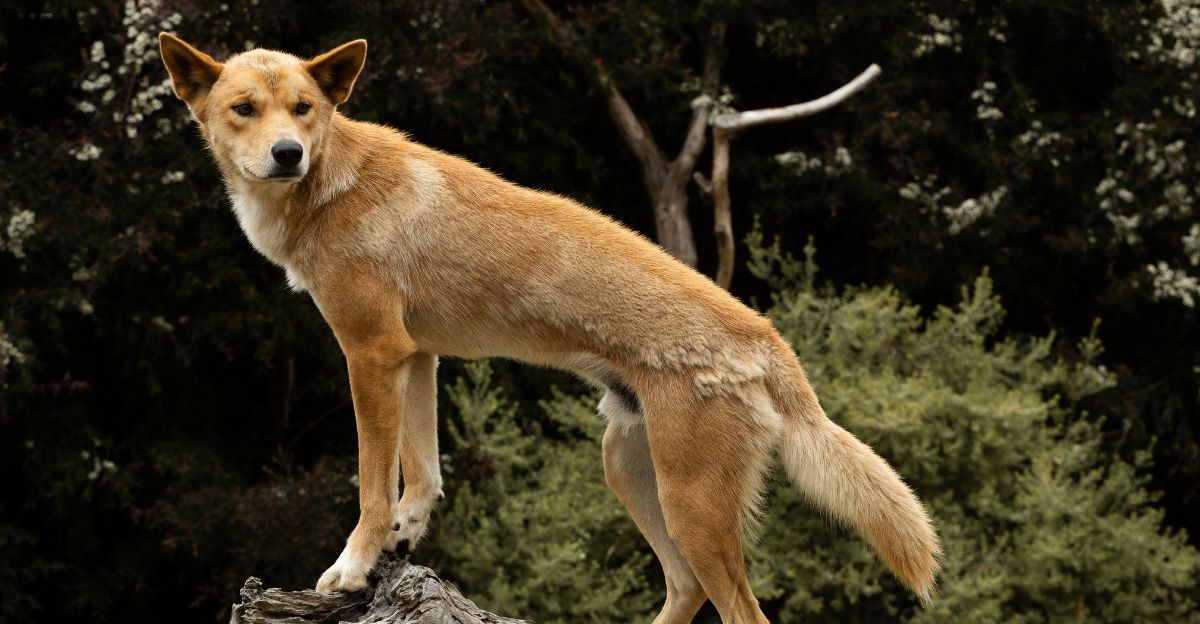
Australia’s classic “wild dog” – the dingo – is essentially a feral dog population, not a conventional breed. Modern studies and the IUCN now consider the dingo to be a feral descendant of prehistoric domestic dogs. These tawny canines hunt kangaroos, wallabies and rabbits in packs, and they howl instead of barking. (They even mate with free-roaming farm dogs, creating dingo‑dog hybrids, which makes pure dingoes rarer in the wild.) In short, the dingo is better seen as a wild dog population adapted to Australia, not a pet breed at all.
African Wild Dog (Painted Wolf)

Africa’s Painted Wolf (Lycaon pictus) is a uniquely patterned wild canid: lithe, large-eared and superbly social. These dogs form packs that expertly hunt impala and other antelope. Unfortunately they are very rare now – only about 6,600 remain in fragmented populations across Africa. Despite their gorgeous coats and intelligence, African wild dogs are listed as Endangered, having declined from massive packs (sometimes over 100) to small groups of 7–15 today. Their story underscores how habitat loss and human conflict have pushed even once‑numerous wild dog populations to the brink.
Dhole (Asiatic Wild Dog)
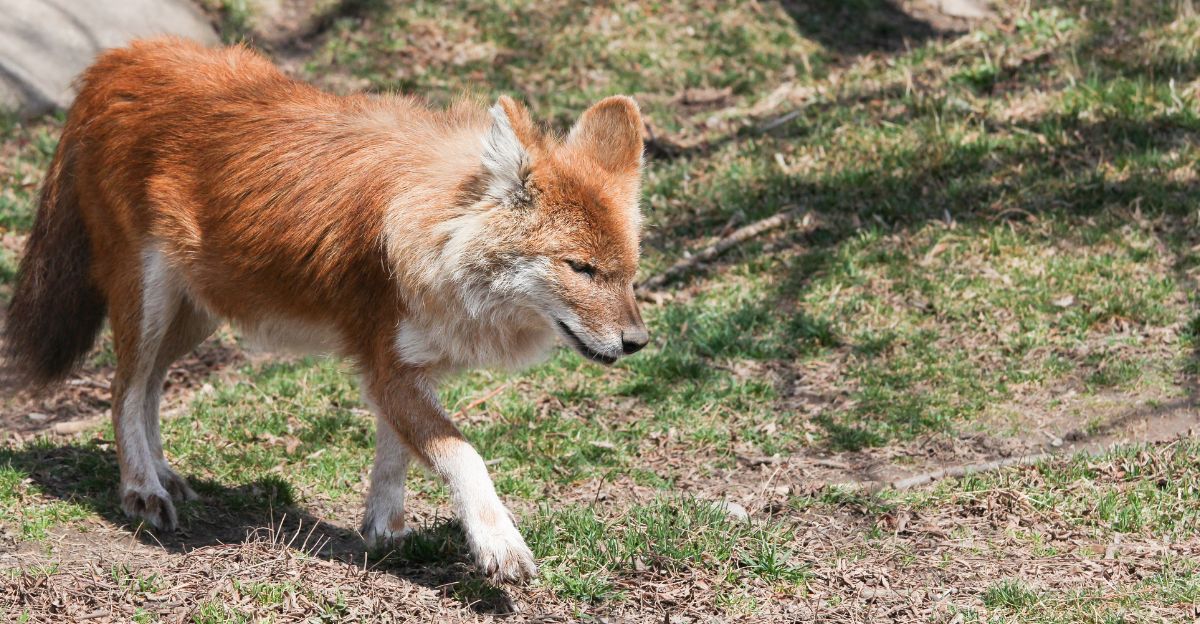
The dhole (Cuon alpinus), nicknamed the “whistling dog,” inhabits forests across South and Southeast Asia. Unlike wolves, dholes live in big “clans” with multiple breeding females. They are expert pack hunters of deer and wild pigs. Sadly, fewer than 2,500 mature dholes survive in the wild, and they are classified as Endangered. (Disease from domestic dogs and habitat loss are driving their decline.) The dhole is a genuine wild species – not derived from modern dogs – and is sometimes called the Indian or Asiatic wild dog.
Ethiopian Wolf (Simien Jackal)
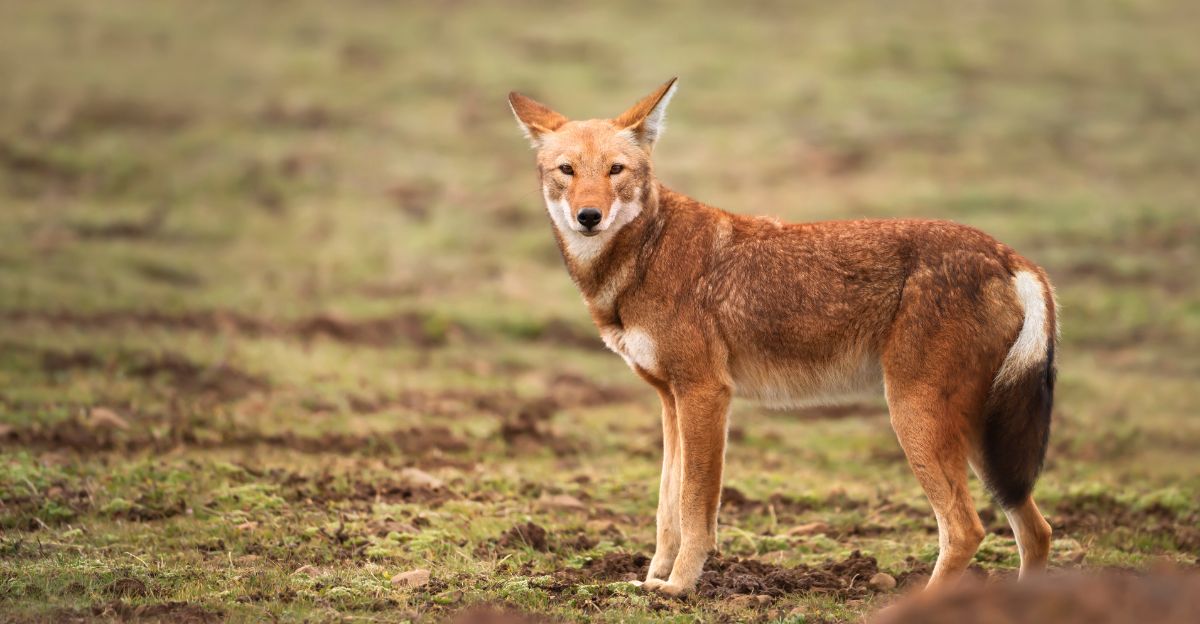
The Ethiopian wolf (Canis simensis) is a reddish, long‑legged canid found only on a few high-altitude mountains in Ethiopia. It isn’t a true wolf or a domestic breed, but the rarest canid on Earth: only ~440 Ethiopian wolves survive in seven isolated “sky island” populations. Their slender build and preference for hunting rodents make them look more fox-like, but they are a distinct wild canid species. Conservation groups warn these wolves are critically imperiled by habitat loss and disease, highlighting the fragile fate of this unique wild dog population.
Coyote (North American Prairie Wolf)
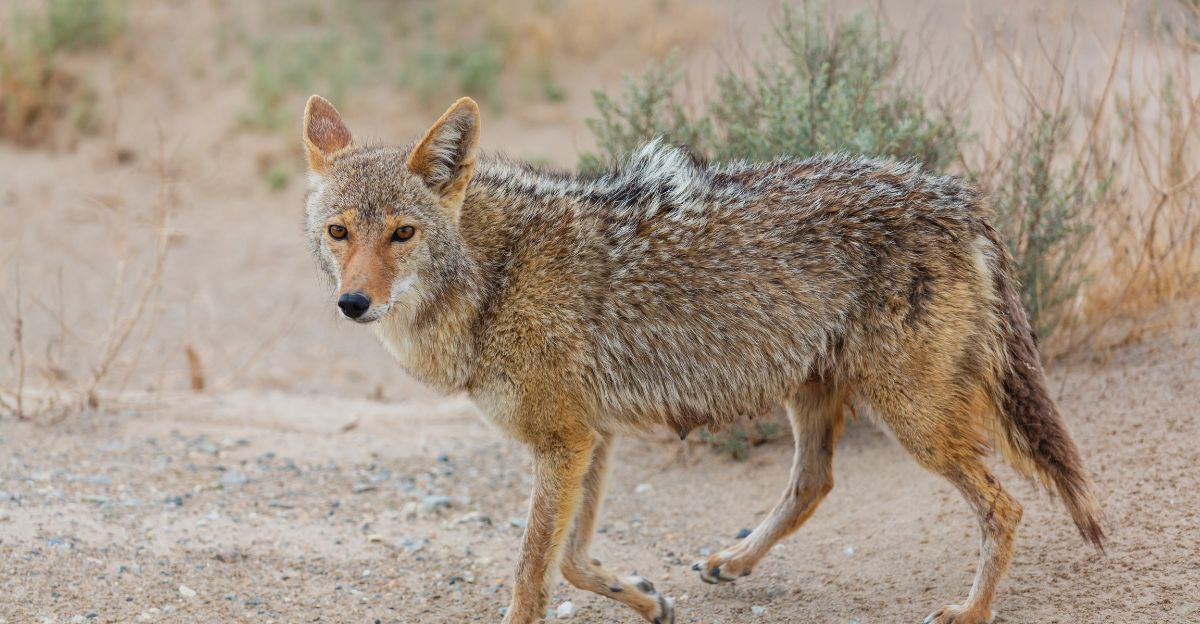
North America’s coyote (Canis latrans) is essentially a wild dog in its own right. Sometimes called the American jackal or prairie wolf, it is native to the entire continent. Coyotes thrive almost everywhere – from deserts to suburbs – and even hunt raccoons and deer. Because they adapt so well to humans, with thriving urban populations, coyotes are listed as “Least Concern” by the IUCN. (In fact, they’ve expanded their range dramatically; hybrid “coywolves” appear in the East due to coyote‑wolf interbreeding.) Coyotes are not a kennel breed at all but the quintessential continent‑roaming wild dog.
Maned Wolf (Brazilian “Golden Wolf”)
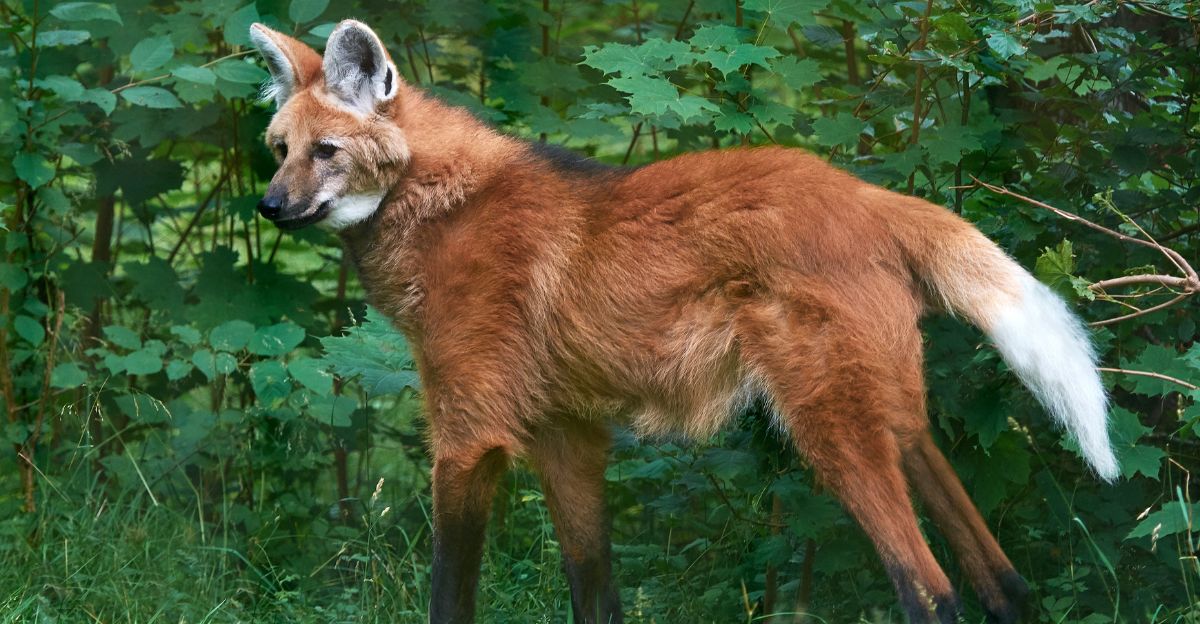
The maned wolf (Chrysocyon brachyurus) is a tall, reddish canid native to South America’s grasslands (Brazilian cerrado, Paraguay, Bolivia). It isn’t a fox or true wolf, but the only species in its genus. With long spindly legs and a mane of black fur, it looks distinctive – and is indeed the largest canid in South America (20–30 kg). Maned wolves communicate with a signature “roar-bark” sound and primarily eat fruit (especially the local “wolf apple”) and small mammals. Habitat loss has made it Near Threatened, but it remains a wild canine population, separate from any domestic breed.
New Guinea Singing Dog
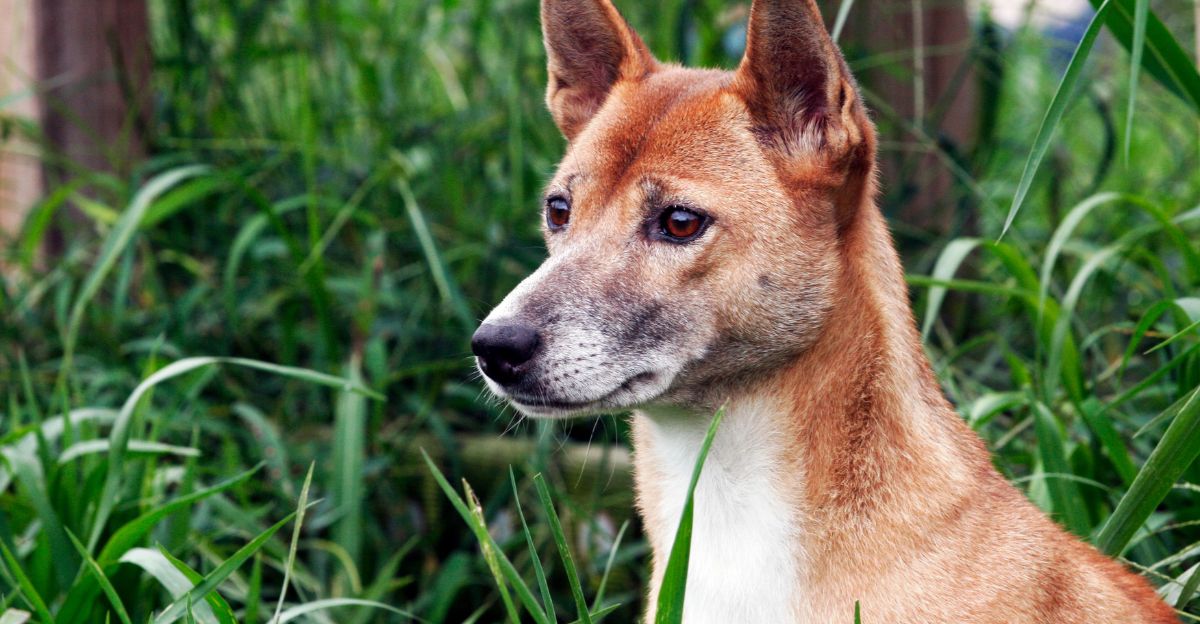
This nearly legendary dog lives wild in Papua’s highlands. The New Guinea singing dog (Canis hallstromi) is an ancient basal dog lineage – essentially a primitive dog – famous for its eerie, whistle-like chorus instead of barking. Tim Flannery and other explorers only photographed wild specimens in the late 20th century; the species was even feared extinct until a few were rediscovered around 2012. Their tiny remnant wild population (in isolated mountain forests) is critically low. These dogs are so wild and adaptable (able to climb and make “yodel” sounds) that they have never been tamed into a typical pet breed.
Bush Dog (Speothos venaticus)
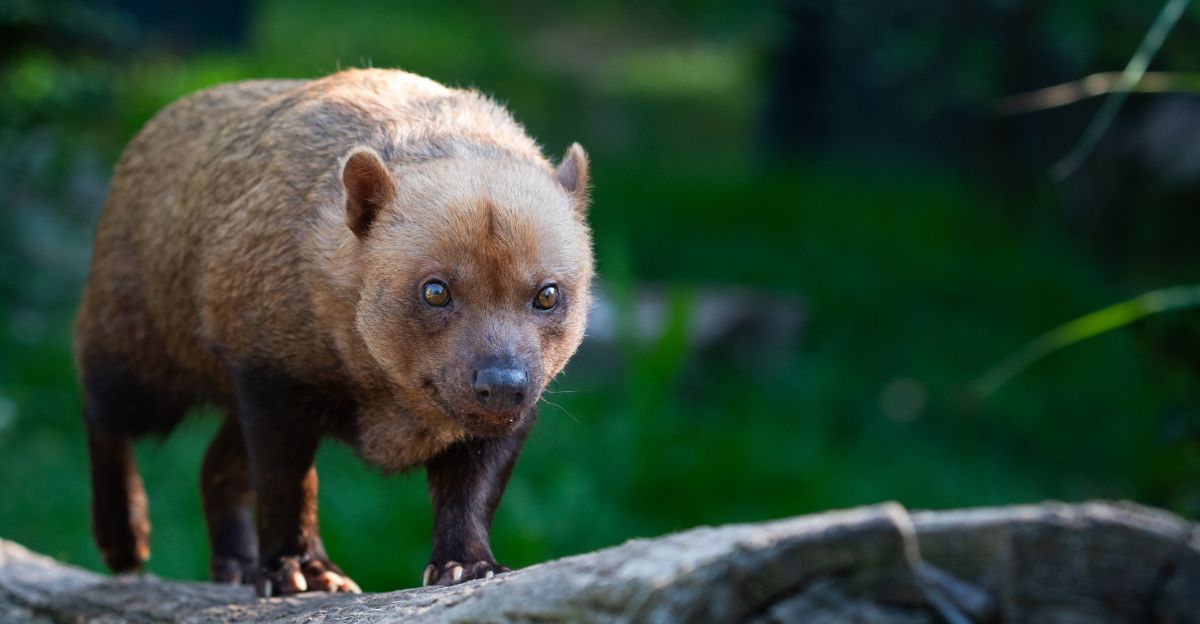
The bush dog is a weird little jungle canid of Central and South America. Think of it as the odd cousin of the dog family: stout, brownish, with partially webbed feet (for swimming) and very short legs. For a long time it was known only from fossils in Brazil and assumed extinct. Then in 1842 it was described alive, revealing the “vinegar dog” of the rainforest. Despite a broad range, bush dogs are rarely seen anywhere (they’re commonest in a few Amazon countries). They live in small packs and eat rodents and small prey. Today this sole member of its genus Speothos is listed Near Threatened, but it remains a hidden gem of the wild-dog world.







